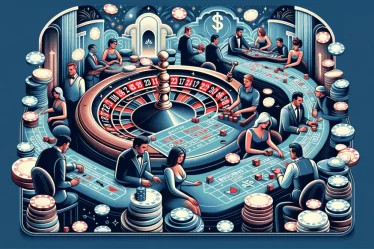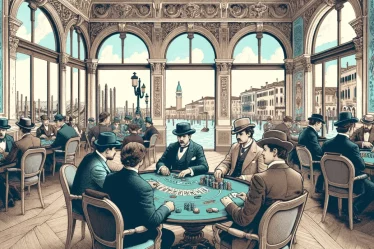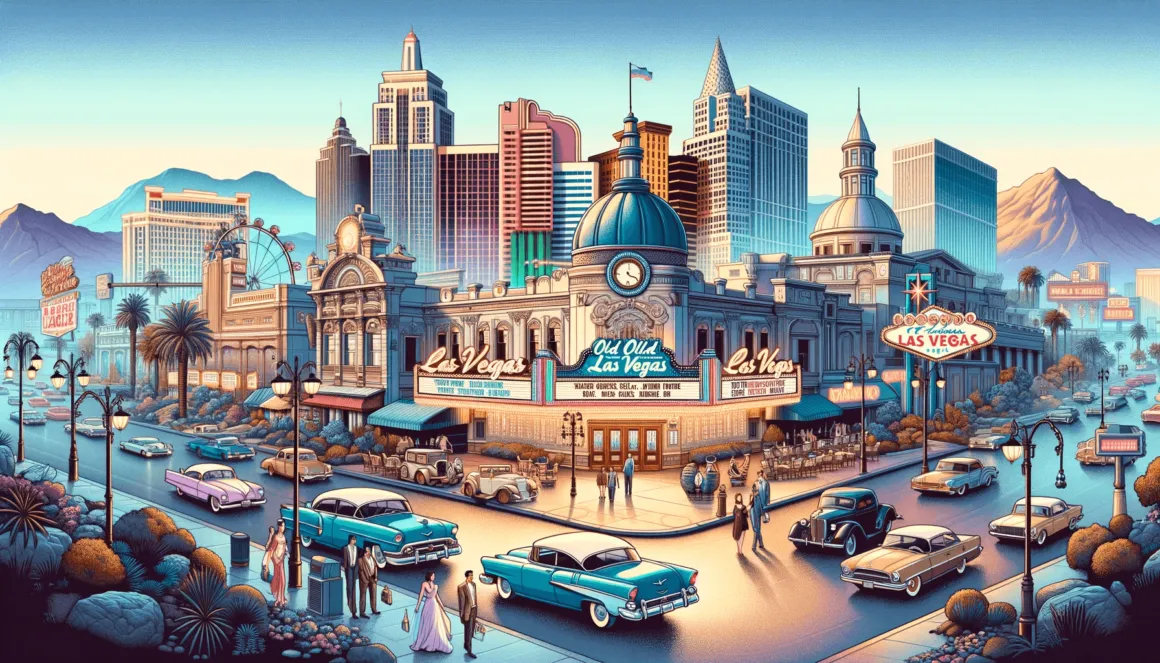
If you mention Las Vegas to anyone, chances are they will immediately think of the iconic Las Vegas Strip. This famous stretch of road is home to some of the most luxurious and extravagant hotels, casinos, and resorts in the world. It has become synonymous with glamour, excess, and entertainment, drawing millions of visitors each year. But have you ever wondered how this larger-than-life destination came to be? In this article, we will take a deep dive into the history of the Las Vegas Strip, from its humble beginnings to its current status as a global tourist hot spot.

1. Early Days: From Dirt Road to Neon Oasis
The Las Vegas Strip as we know it today was not always the bustling and vibrant place it is now. In fact, it started out as a simple dirt road in the early 1900s. At that time, the area was just a small town in the middle of the Nevada desert, with a few scattered ranches and farms. The first hotel-casino on what is now the Strip was built in 1931, called the Pair-O-Dice Club. However, it wasn’t until a decade later when things started to change dramatically.
The Mob’s Influence
In the 1940s and 1950s, organized crime figures saw an opportunity to turn Las Vegas into a gambling mecca. They began investing heavily in the development of lavish casino-hotels, which soon became known for their glitz and glamour. These mob-controlled establishments were responsible for bringing in top-notch entertainment, including names like Frank Sinatra, Dean Martin, and Elvis Presley. The rise of the Las Vegas Strip as a hub of entertainment and debauchery had begun.
The Rise of the Neon Era
One of the defining features of the Las Vegas Strip is its bright and colorful neon signs. This iconic aesthetic can be traced back to the 1930s, but it wasn’t until the 1940s that neon truly took over. As more and more casinos were built, each one tried to outdo the other with bigger and bolder neon signs. These signs not only lit up the Strip but also became a symbol of the city itself. They were seen as a representation of the excitement, glamour, and larger-than-life nature of Las Vegas.
The Rat Pack Era
One of the most significant events that cemented the Strip’s status as an entertainment destination was the arrival of the Rat Pack. This group of talented performers, consisting of Frank Sinatra, Dean Martin, Sammy Davis Jr., and others, regularly performed at the Sands Hotel and Casino in the late 1950s and early 1960s. Their shows attracted crowds of visitors, further solidifying the Strip’s position as a premier location for world-class entertainment.
2. The Golden Age: Mega-Resorts and Extravagance
The 1960s and 1970s saw the Las Vegas Strip transform into a playground for the rich and famous. The mob influence had started to wane, and corporations began taking over the casinos. This led to the development of massive resorts that were designed to be destinations in themselves, rather than just places to gamble. The now-iconic Caesars Palace, featuring its Roman-inspired architecture and lavish amenities, opened in 1966, marking the beginning of the golden age of the Las Vegas Strip.
The Mirage and the Birth of the Megaresort
In 1989, Steve Wynn, a prominent casino developer, opened the Mirage, which ushered in a new era of extravagance on the Strip. This property, boasting an artificial volcano, an indoor rainforest, and a massive aquarium, set the standard for what would become known as megaresorts. These properties were not just hotels and casinos; they were self-contained resorts with everything a visitor could want, from shopping and dining to entertainment and nightlife.
The Luxor: An Architectural Marvel
Another significant milestone in the development of the Las Vegas Strip was the opening of the Luxor in 1993. This pyramid-shaped hotel-casino was designed to resemble the ancient Egyptian city of Luxor and is still one of the most recognizable landmarks on the Strip today. Its unique architecture and lavish interiors captured the imagination of visitors, solidifying the Strip’s reputation for being a place where anything is possible.
The Venetian: Bringing Europe to America
The Venetian, which opened its doors in 1999, took the concept of themed resorts to the next level. This property recreates the romantic city of Venice, complete with gondola rides, Grand Canal shoppes, and stunning architecture. It became an instant hit with tourists looking for a taste of Europe without having to leave the United States. The success of the Venetian paved the way for other themed resorts on the Strip, such as Paris Las Vegas and New York-New York.
3. Evolving with the Times: The Modern Las Vegas Strip
As the 21st century rolled around, the Las Vegas Strip continued to evolve and adapt to changing times. While the megaresorts and extravagant displays of wealth still remain, there has been a conscious effort to diversify the offerings on the Strip to attract a wider audience. Here are some of the key developments that have taken place in recent years.
The Rise of Non-Gaming Attractions
In the early days, the main draw of the Las Vegas Strip was gambling. However, as more and more states legalized gambling, the Strip had to find new ways to entice visitors. This led to the rise of non-gaming attractions, such as shopping malls, high-end restaurants, and family-friendly entertainment options. These additions have made the Strip more appealing to a broader demographic, including families and non-gamblers.
The Emergence of Dayclubs and Pool Parties
In recent years, there has been a shift towards adding more daytime activities to the Strip’s already-packed itinerary. Dayclubs, which are essentially pool parties with DJs, have become incredibly popular, especially during the hot summer months. Several resorts have built massive pools and party decks to cater to this trend, attracting young crowds looking for a different kind of Vegas experience.
Technology and Innovation
The Las Vegas Strip has always been at the forefront of innovation and technology, and this continues to be true even today. As consumer demands change, the Strip has adapted to offer state-of-the-art amenities and experiences. For example, several resorts have incorporated virtual reality and augmented reality technology into their attractions, allowing visitors to immerse themselves in unique and exciting experiences.
4. Challenges and Controversies: The Dark Side of the Strip
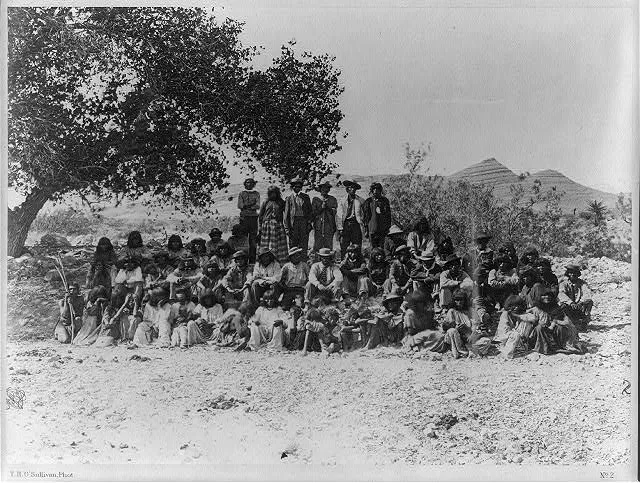
While the Las Vegas Strip is undoubtedly a vibrant and glamorous place, it has had its fair share of challenges and controversies over the years. Here are some of the issues that have affected the Strip and how they have shaped its development.
Natural Disasters
Being located in the middle of the desert, the Strip is no stranger to extreme weather conditions. In the past, it has faced flash flooding, fierce winds, and extreme heat waves. The most significant challenge came in 2008 when Hurricane Ike caused significant damage to several casinos and resorts. This natural disaster highlighted the need for better crisis management and preparedness on the Strip.
Crime and Safety Concerns
The size and popularity of the Las Vegas Strip make it a prime target for crime. Over the years, there have been many incidents of theft, violence, and other crimes on the Strip. To combat this, the city has increased police presence and implemented stricter security measures in and around the resorts. While these efforts have helped reduce crime rates, safety concerns remain a major issue for both tourists and locals.
Environmental Impact
The rapid development of the Strip over the years has had a significant impact on the surrounding environment. The constant use of resources like water and electricity, as well as the vast amounts of waste generated, have raised concerns about sustainability. To address these issues, Las Vegas has taken steps towards becoming a more eco-friendly destination, with some resorts implementing green practices and using renewable energy sources.
5. The Future of the Las Vegas Strip: What’s Next?
The Las Vegas Strip has proven time and again that it is capable of reinventing itself to stay relevant and appealing to visitors. So what does the future hold for this iconic destination? Here are some of the developments we can look forward to in the coming years.
The Rise of Sports Betting
In 2018, the Supreme Court struck down a federal law that prohibited sports betting in most states. This opened up the possibility for Las Vegas to become a hub for sports betting, especially with the arrival of professional sports teams like the Raiders and the Golden Knights. Several resorts have already started incorporating sportsbooks into their properties, and it’s likely that we will see more of this in the future.
The Continued Growth of Non-Gaming Attractions
As mentioned earlier, the demand for non-gaming attractions has been on the rise, and this trend is expected to continue. With the increasing popularity of dayclubs, virtual reality experiences, and other unique offerings, we can expect to see the Strip diversify even further in the coming years. This will make it an attractive destination for all kinds of travelers, not just those looking to gamble.
Technology and Innovation
The Strip is constantly evolving, and new technologies and innovations are being introduced all the time. Virtual reality and augmented reality are just the tip of the iceberg; we can expect to see even more cutting-edge technology being incorporated into attractions and experiences on the Strip. This will enhance the overall visitor experience and solidify Las Vegas’ position as a leader in entertainment and tourism.
6. Exploring the Las Vegas Strip: Must-See Attractions
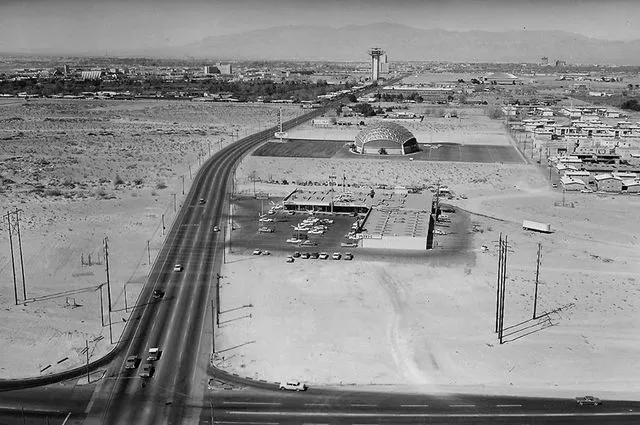
With so much to see and do, it can be overwhelming trying to plan a trip to the Las Vegas Strip. To make things easier for you, here are some of the must-see attractions that you should include in your itinerary.
The Bellagio Fountains
One of the most iconic attractions on the Strip is undoubtedly the Bellagio Fountains. Every night, visitors gather around the massive man-made lake in front of the resort to watch an incredible display of water, lights, and music. This free show is a must-see for anyone visiting the Strip and is one of the most photographed spots in the city.
The High Roller
For a bird’s eye view of the Strip, head to the High Roller at the LINQ Promenade. This giant observation wheel stands at 550 feet tall and offers stunning panoramic views of the surrounding area. Each pod can accommodate up to 40 people, making it perfect for groups or families.
The Neon Museum
To learn more about the history of the neon signs that have made the Strip famous, visit the Neon Museum. This open-air museum showcases over 200 vintage signs from old casinos and other businesses in Las Vegas. It’s a fascinating walk through the city’s past and is a favorite among locals and tourists alike.
Conclusion: A Destination That Will Always Evolve
The Las Vegas Strip has come a long way from its humble beginnings as a simple dirt road. Today, it is a bustling, vibrant, and ever-evolving destination that attracts millions of visitors each year. From its early days as a playground for mobsters to its current status as a global entertainment hub, the Strip has had a fascinating journey through time. And with constant developments and innovations, it will undoubtedly continue to captivate and entertain visitors for many years to come.
References:
- “Las Vegas Strip.” History.com, A&E Television Networks, 31 Dec. 2020, www.history.com/topics/las-vegas-strip.
- “The Evolution of the Las Vegas Strip: From Dirt Road to Neon Oasis.” Time, Time USA, LLC., 1 Oct. 2017, time.com/4964533/las-vegas-strip-history/.
- “How the Mafia Built the Las Vegas Strip.” Smithsonian Magazine, Smithsonian Institution, 14 May 2019, www.smithsonianmag.com/history/how-mafia-built-las-vegas-strip-180972468/.
- “The Rise of the Megaresort: How Las Vegas Moved Upmarket.” The Independent, Independent Digital News & Media, 8 Sept. 2015, www.independent.co.uk/travel/americas/the-rise-of-the-megaresort-how-las-vegas-moved-upmarket-10492536.html.
- “Las Vegas Strip Continues Evolution With Sports Betting at MGM Resorts.” Forbes, Forbes Media LLC., 24 June 2018, www.forbes.com/sites/davidschwartz/2018/06/24/las-vegas-strip-sports-betting/?sh=2a122d352903.
- “A Brief History of the Las Vegas Strip.” Desert Companion, Nevada Public Radio, 30 Jan. 2020, knpr.org/desert-companion/2020-01/brief-history-las-vegas-strip.
- “Las Vegas Strip Turns Its Lights Green at Night to Follow the Green Movement.” National Geographic, National Geographic Society, 22 Apr. 2019, www.nationalgeographic.com/environment/2019/04/las-vegas-strip-buildings-go-green-to-cut-harmful-co2-emissions/.

